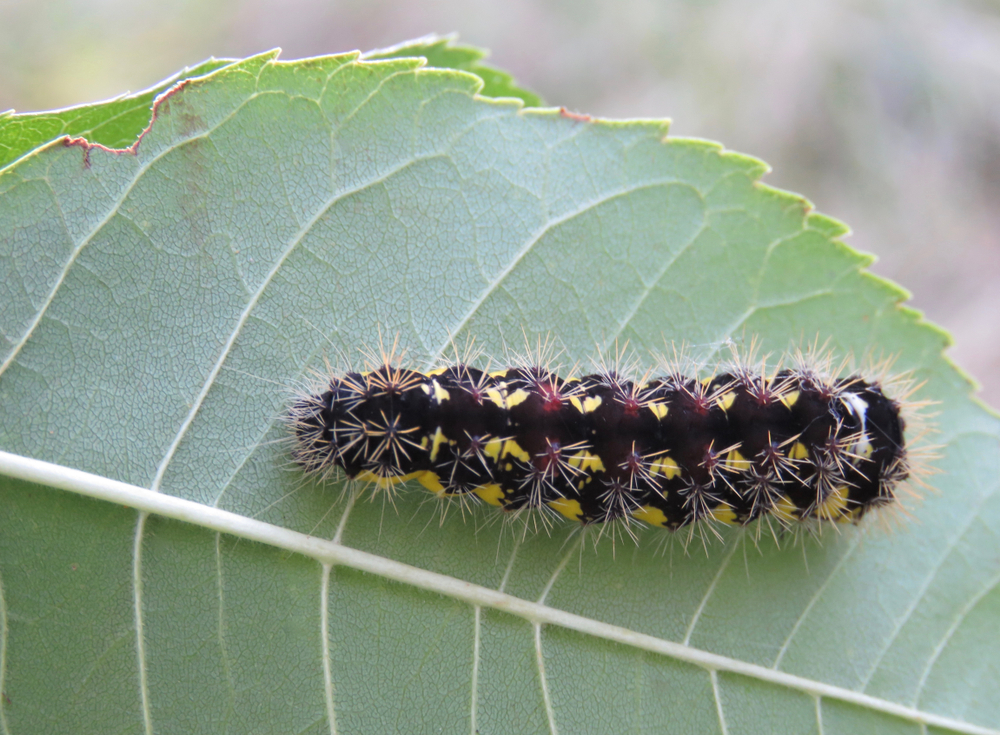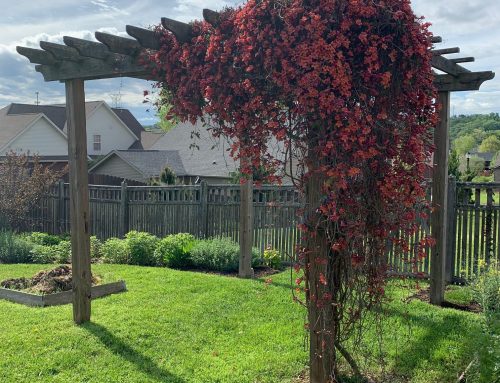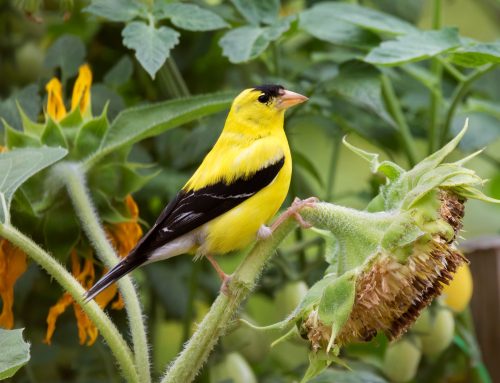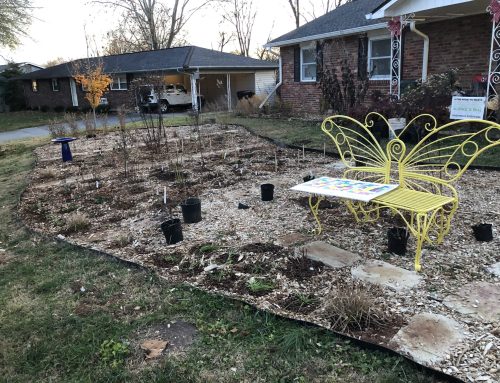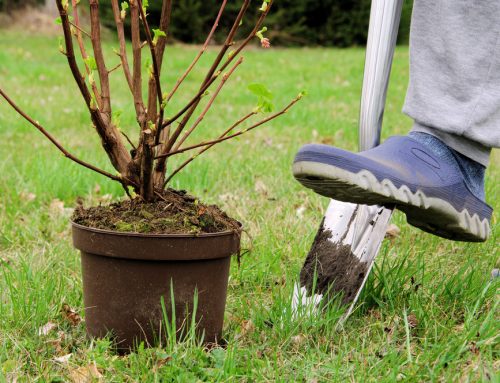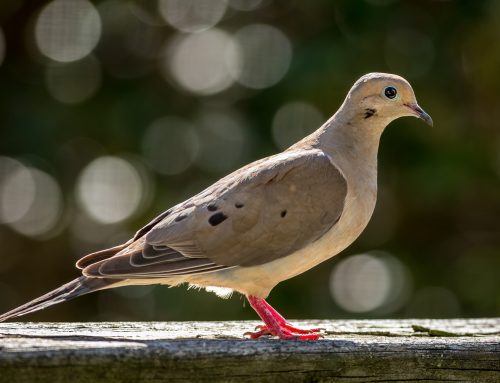by Karin Beuerlein
The last time I posted, the world was a very different place. COVID-19 has interrupted all our lives, and it also interrupted this blog, so I apologize for being tardy. I hope you and yours are healthy and safe.
In the meantime, spring is upon us, and it’s still a wonderful time to plant things that will improve the outlook for the backyard birds in your life. You’re just going to have shop online (say, here or here) instead of visiting garden centers in person.
What Should I Plant?
Welcome to the broadest topic in all of gardening, which I do not intend to tackle in one blog post. But fortunately, everyone here is interested in the welfare of birds, so that gives us a place to start.
You may remember that birds need copious amounts of insect protein to feed their young, and also to eat all season long. All insects require host plants for their larvae—hence the term larval hosts. These are plants that are native to the same area and that co-evolved with those insects; most insects require a specific host plant to reproduce. To support more birds, you need to plant more larval hosts.
Now, the bad news: the gardening industry is designed entirely to sell you things that are not larval hosts. In fact, if you go to a gardening center and ask where the larval hosts are, you might as well be speaking Klingon, because no one will know what you’re talking about. But close your eyes and throw a stick and you’ll probably hit a dozen plants that not only are not larval hosts, but are likely exotic and possibly invasive and provide no value to birds whatsoever.
That’s a shame, and it’s a big reason bird populations are declining. But there’s a workaround. Until garden centers make native plants a priority, you have to do your own legwork.
Start Here
I recommend two books to start hunting down your larval host plants. For a beautifully illustrated guide to all plants that are native to Southeastern gardens and are likely to perform well, buy this:
Native Plants of the Southeast: A Comprehensive Guide to the Best 460 Species for the Garden by Larry Mellichamp and Will Stuart
If you aren’t already a gardener, this book will help familiarize you with our native flora and their habitat requirements. After you’ve found some plants you want to try, cross-reference them with this book:
The Living Landscape: Designing for Beauty and Biodiversity in the Home Garden by Douglas Tallamy and Rick Darke
I already hyped this book in an earlier post. In addition to the great landscaping ideas it will give you, it has an invaluable table in the back that lists most native trees, shrubs, vines, grasses, and perennials, and categorizes each by their value to wildlife. For each plant, you’ll discover whether it hosts insects, and how many species of insects. You can see at a glance which plants make the most difference for birds.
With these two books alone, you can make a lot of birds incredibly happy.
Six Cool Larval Hosts to Try
To get you started, here are six examples of interesting natives that are beautiful and host insects for your backyard birds. Most common native plants are excellent larval hosts (oaks, maples, willows, etc.), but here I’ve listed two trees, two shrubs, and two perennials that are less well known if you’re new to gardening.
Of course, before you plant anything, make sure your property conditions match the plant’s habitat requirements. (More homework for you!)
American Basswood (Tilia caroliniana or Tilia americana)
Plant this lovely shade tree and it will probably be the only one on your block. Full of bee-magnet blooms in early summer and hosting 149 species of caterpillars, it’s a wildlife-friendly choice that ought to be more popular than it is.
‘Winter King’ Hawthorn (Craetagus viridis)
This tree packs a lot of function into its small frame—ornamental flowers, berries for birds, great fall color, and hosting capabilities for several species of hairstreak butterflies. ‘Winter King’ is a good choice for limited spaces and it’s not too picky about location.
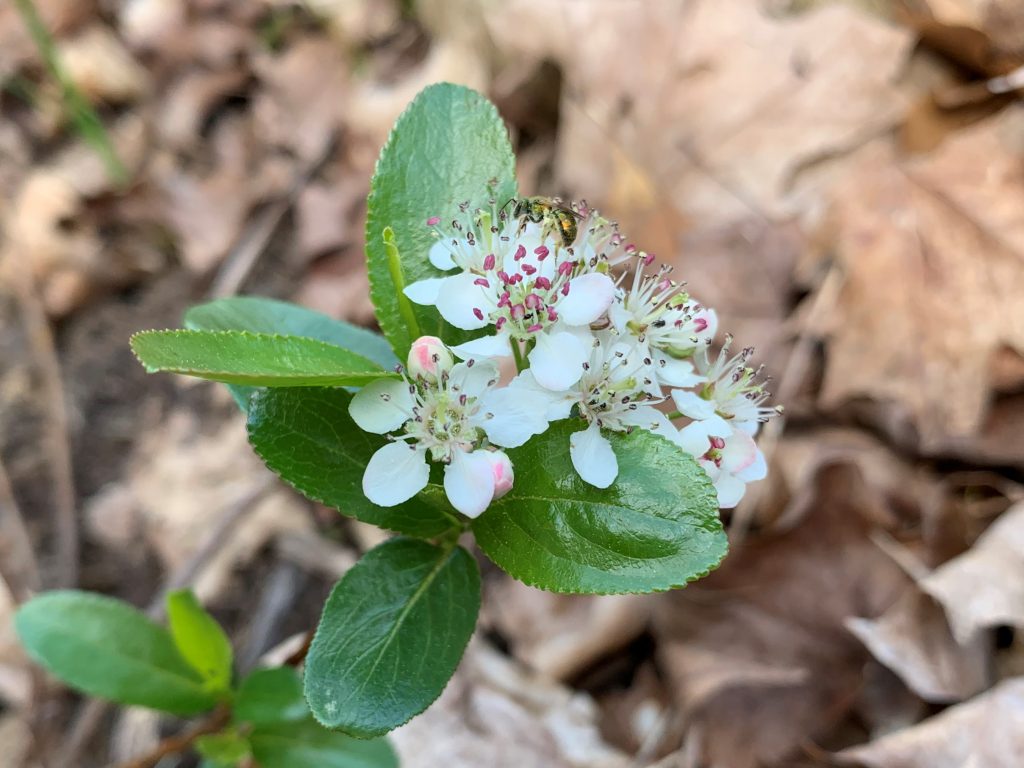
Black chokeberry (Aronia melanocarpa)
This shrub has a similar calling card—multi-season interest—and it hosts 29 caterpillar species. The flowers are intricate and stunning up close (see photo). If you have a naturalistic area, go with the straight species, Aronia melanocarpa, which gets big and blousy and makes a great nest site. For a smaller garden bed, try the cultivar ‘Low Scape Mound,’ a dainty three-foot shrub.
Mapleleaf viburnum (Viburnum acerifolium)
Native viburnums nurture around 100 species of butterflies and moths, and the fall berries are rich in fats and proteins for migrating birds. (There are lots of exotic species of viburnums out there, so make sure you’re buying the ones native to the Southeast.) The mapleleaf viburnum is adaptable to either shade or sun.
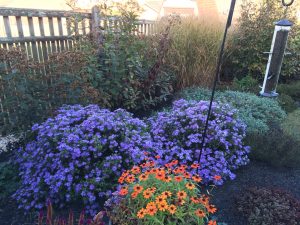
Swamp mallow (Hibiscus moscheutos)
Got a low spot in your garden that stays wet? Don’t fix it—fill it with swamp mallow and enjoy the show. The giant blooms attract hummingbirds in late summer, and the leaves host 20 species of caterpillars. I particularly love this plant’s close cousin, scarlet rosemallow (Hibiscus coccineus). Spectacular.
‘Raydon’s Favorite’ aromatic aster (Symphyotrichum oblongifolium)
This is probably my favorite perennial. Its woodsy-smelling foliage looks good all season until the blooms open in October, exploding into purple fireworks underneath the changing fall leaves. Aromatic aster hosts pearl crescent butterflies plus 108 other species. It’s also a critical food source for monarch butterflies during fall migration, when few other things are blooming.
So get researching and planting! We both know you have nowhere else to go and nothing better to do. Gardening and birdwatching are the best antidotes I know to physical distancing; maybe a good outcome for this unfortunate situation is that more people figure that out. Stay safe out there!
